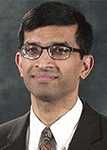
12 Mar Did Healthcare Workers Catch COVID In or Outside the Hospital?
MedicalResearch.com Interview with:

Dr. Jacob
Jesse T. Jacob, MD
School of Medicine
Director, Antibiotic Stewardship Program
Emory University, Atlanta, Georgia
MedicalResearch.com: What is the background for this study?
Response: Since coronavirus disease 2019 (COVID-19) was recognized in the United States in January 2020, the risk of infection with severe acute respiratory syndrome coronavirus 2 (SARS-CoV-2) attributed to exposures in the health care workplace has been studied with conflicting results, and the role of job functions (such as nurse) or specific workplace activities, including care for individuals with known and unknown SARS-CoV-2 positivity, increase the risk of SARS-CoV-2 infection.
We assessed more than 24,000 healthcare providers between April and August 2020 across four large academic medical systems (Emory, Johns Hopkins, Rush University Medical Center, and University of Maryland) which collaborate in the CDC’s Prevention Epicenter Program and conduct innovative infection prevention research. Each site conducted voluntary COVID-19 antibody testing on its health care workers, as well as offered a questionnaire/survey on the employees’ occupational activities and possible exposures to individuals with COVID-19 infection both inside and outside the workplace. We also looked at three-digit residential zip-code prefixes to determine COVID-19 prevalence in communities.
MedicalResearch.com: What are the main findings?
Response:We found that community exposure to COVID-19 was associated with COVID-19 infection in health care providers, but specific occupational activities in a hospital or health care setting were not. Additionally, younger age, which maybe associated with different social behaviors, and black race, which has been found in many other studies of non-healthcare providers) were also associated with seropositivity.
MedicalResearch.com: What should readers take away from your report?
Response: Our research suggests that workplace factors were not a major source of risk for SARS-CoV-2 seropositivity in healthcare providers. Being around patients and taking care of patients with COVID-19 in a health care setting were not significantly associated with positive antibody testing in healthcare providers. All of the protective measures, such as personal protective equipment (PPE) and infection control policies and procedures, are keeping our health care providers safe. We found an overall low seropositivity rate (4.4%) and community-based exposures were most strongly associated with seropositivity in healthcare providers. Healthcare providers should be reassured in following existing infection prevention practices in the workplace and should continue to follow public health recommendations while in the community. COVID-19 vaccination and other prevention strategies targeting community transmission will also be critical to prevent COVD-19 in healthcare providers.
MedicalResearch.com: What recommendations do you have for future research as a result of this work?
Response: Future research should include assessment of the various factors that may contribute to transmission between healthcare providers across different healthcare settings. The observed racial disparities warrant further investigation and may help to inform vaccination strategies. The higher risk associated with lage<30 years may be due to increased social interactions in larger groups, but may also be related to having smaller children or less frequent or milder symptoms.
MedicalResearch.com: Is there anything else you would like to add?
Response: This study was supported in part by the CDC’s Prevention Epicenters Program and grant number T32AI074492 from the National Institute of Allergy and Infectious Diseases.
Citation:
Jacob JT, Baker JM, Fridkin SK, et al. Risk Factors Associated With SARS-CoV-2 Seropositivity Among US Health Care Personnel. JAMA Netw Open. 2021;4(3):e211283. doi:10.1001/jamanetworkopen.2021.1283
JOIN OUR EMAIL LIST
[mailpoet_form id="5"]We respect your privacy and will never share your details.
[last-modified]
The information on MedicalResearch.com is provided for educational purposes only, and is in no way intended to diagnose, cure, or treat any medical or other condition. Always seek the advice of your physician or other qualified health and ask your doctor any questions you may have regarding a medical condition. In addition to all other limitations and disclaimers in this agreement, service provider and its third party providers disclaim any liability or loss in connection with the content provided on this website.
Last Updated on March 12, 2021 by Marie Benz MD FAAD
